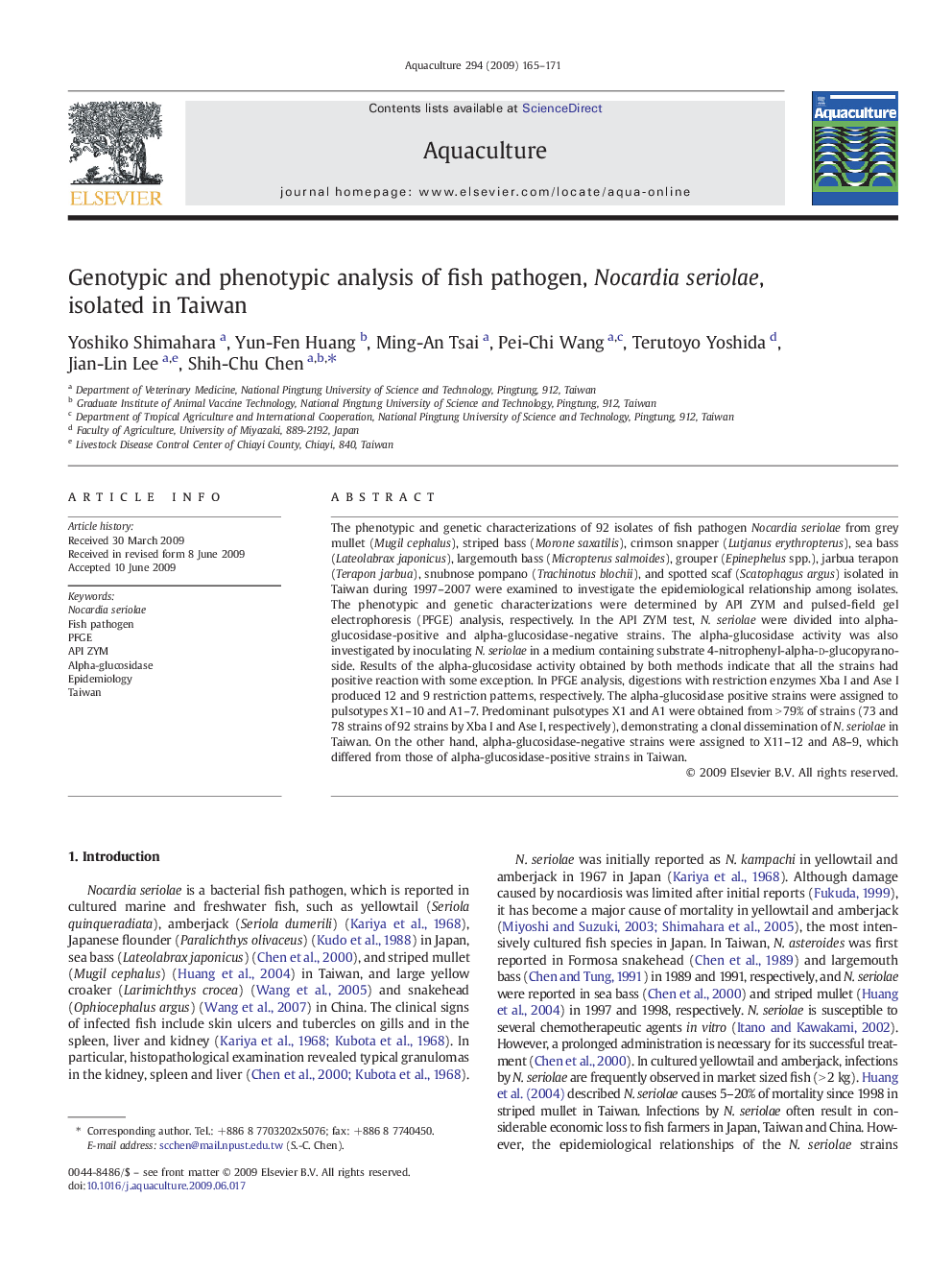| Article ID | Journal | Published Year | Pages | File Type |
|---|---|---|---|---|
| 2423930 | Aquaculture | 2009 | 7 Pages |
The phenotypic and genetic characterizations of 92 isolates of fish pathogen Nocardia seriolae from grey mullet (Mugil cephalus), striped bass (Morone saxatilis), crimson snapper (Lutjanus erythropterus), sea bass (Lateolabrax japonicus), largemouth bass (Micropterus salmoides), grouper (Epinephelus spp.), jarbua terapon (Terapon jarbua), snubnose pompano (Trachinotus blochii), and spotted scaf (Scatophagus argus) isolated in Taiwan during 1997–2007 were examined to investigate the epidemiological relationship among isolates. The phenotypic and genetic characterizations were determined by API ZYM and pulsed-field gel electrophoresis (PFGE) analysis, respectively. In the API ZYM test, N. seriolae were divided into alpha-glucosidase-positive and alpha-glucosidase-negative strains. The alpha-glucosidase activity was also investigated by inoculating N. seriolae in a medium containing substrate 4-nitrophenyl-alpha-d-glucopyranoside. Results of the alpha-glucosidase activity obtained by both methods indicate that all the strains had positive reaction with some exception. In PFGE analysis, digestions with restriction enzymes Xba I and Ase I produced 12 and 9 restriction patterns, respectively. The alpha-glucosidase positive strains were assigned to pulsotypes X1–10 and A1–7. Predominant pulsotypes X1 and A1 were obtained from > 79% of strains (73 and 78 strains of 92 strains by Xba I and Ase I, respectively), demonstrating a clonal dissemination of N. seriolae in Taiwan. On the other hand, alpha-glucosidase-negative strains were assigned to X11–12 and A8–9, which differed from those of alpha-glucosidase-positive strains in Taiwan.
